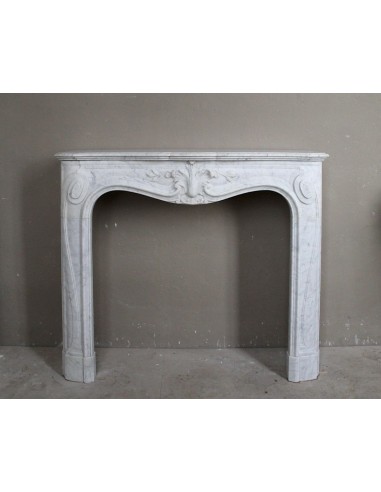When I have to comment on a fireplace by our Louis Majorelle... I feel confused and moved: But how can I, I who am only a merchant (maybe a little dreamer..) judge such a great and unattainable personality as that of our Louis!
What he “touched” with his pencil, whether it was a piece of furniture, a fireplace or, what do I know, the embrasse of a curtain, well any object became pleasing to the eye, desirable if you didn't own it, a source of pride if ever it was yours in your home. The fact that his factory was called “Ecole de Nancy” and not “factory such-and-such ” also always fascinated me. And indeed this “factory,” in addition to always pleasing objects, also churned out MANY fine artisans, just think of Emile Gallé, who became number ONE in the world in the field of ceramic and glass art objects..
Incidentally (later, I promise, I will also talk about the fireplace itself) know that two of the most beautiful and most visited houses in the world are his, one in Nancy and one in Marrakech, both of which have become museums of Art Nouveau, Art Nouveau and Art Deco, yes, because if Majorelle was the prime mover of Art Nouveau, he certainly did not disdain new and modernist stylisms, after all, in part offshoots of his work as well, such as Art Nouveau and Art Deco.
The Majorelle mantel we are presenting here is, by far, THE SMALLEST I HAVE EVER SEEN IN HALF A CENTURY OF WORK AND RESEARCH IN THIS FIELD.. 130 CM SLENDER...
Those who love Majorelle fireplaces will recognize them a mile away, but those who are new to the craft have an infallible marker for, precisely, being able to recognize them (fakes excluded, of course) and that marker is...a kind of stole that from those “rondes” on either side of the shoulders descends, curving elegantly, until it touches the baseboard of the legs. Some art critics have said that the idea for these stoles (which you will find in ALL of our Louis' fireplaces) was suggested by certain stoles of ancient Rome that only senators could wear, as a sign of their authority. This particular stole was called a LATICLAVIO.
This specific mantel offers us more than one difference from the classic production of our Louis:
A) first of all, its size, which is extremely small. Majorelle fireplaces, for obvious reasons, cost much more than many others and therefore were purchased only by wealthy customers, who owned houses and rooms of abundant size, situations that required, noblesse oblige, large sized fireplaces;
B) Normally, the sculptures of Majorelle fireplaces were, intentionally, compositions of “strong” features, of decisive signs, of powerful volutes, in short, while the mantel presented here, in its front (which is generally considered the most important part of a fireplace) reaches degrees of sculptural finesse, of particular embroidery that NEVER, in half a century of love for the Majorelle fireplace, NEVER, I said, had I seen before...
IN SHORT, IT CAN CERTAINLY BE SAID THAT THIS VERY SPECIAL MODEL IS NOT A MODEL.. LET ME EXPLAIN BETTER: A MODEL IS MADE AND THEN A FEW OR MANY COPIES ARE MADE WHILE OF THIS MANTEL IT SEEMS THAT IDENTICAL ONES ARE NOT ON THE MARKET. MY OPINION IS THAT SAID LITTLE PRINCE WAS MADE AT THE REQUEST, PERHAPS, OF A FRIEND OF OUR LOUIS BECAUSE MAJORELLE WAS NOT THE KIND OF ARTIST WHO WORKED ON COMMISSION, HE, ONLY PRODUCED HIS DRAWINGS, HIS IDEAS, HE GAVE LIFE TO WHAT HE HIMSELF CREATED AND NOT TO WHAT COULD BE TO HIM.. SUGGESTED..
WHATEVER, IT WILL MEAN THAT THE BUYER OF THIS FIREPLACE WILL COME INTO POSSESSION OF THE RAREST FIREPLACE MAJORELLE ON THE GLOBE!!!
WHEN WERE THIS FIREPLACE AND ITS BRETHREN BORN?
WE ARE IN THE DECADES BETWEEN THE LATE NINETEENTH AND EARLY TWENTIETH CENTURIES, IN A WORD, AT THE HEIGHT OF THE BELLE EPOQUE!!!






























































